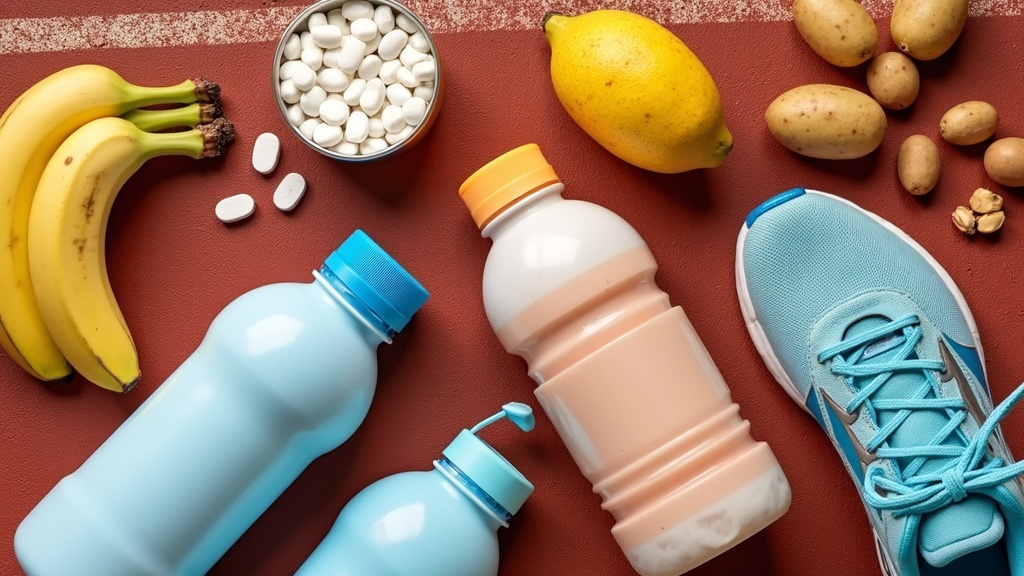Keeping electrolytes balanced during runs really matters if you want to feel strong from start to finish. Every time I’m out for a longer run, especially in the heat, I notice how much my pace, energy, and even mood depend on getting sodium, potassium, and other electrolytes dialed in. Electrolyte management might sound complicated at first, but getting the basics right has a pretty big impact on both how you feel during your run and how quickly you recover after. Here’s everything you need to know to stay on top of your electrolyte game while running.

Why Electrolytes Matter for Runners
Electrolytes are minerals; think sodium, potassium, calcium, and magnesium; that our bodies use for all sorts of important jobs. They help control muscle contractions, nerve signals, hydration, and even your blood pressure. When I sweat, which is basically every time I run, I’m not just losing water—there’s a steady drip of these minerals heading out too. If you don’t replace them, you’ll start feeling tired, your muscles might cramp up, and your running performance can really drop.
Most runners feel fine for the first 45 to 60 minutes, but for anything longer or on blazing hot days, electrolyte balance starts to matter a lot more. That’s when hydrating with just water sometimes isn’t enough, which is why I make a point of planning ahead with both liquids and salty foods or supplements.
How Much Do You Really Need?
The amount of electrolytes a runner needs can change a lot depending on several things: the length and intensity of the run, temperature and humidity, and your personal sweat rate. In general, here’s a ballpark:
- Sodium: Most runners lose the most sodium; anywhere from 200-700 mg per pound of sweat. Longer or sweatier runs need more replacement.
- Potassium: This usually ranges from 35-100 mg per pound of sweat, but you can often get enough by eating everyday foods.
- Magnesium & Calcium: Losses are much smaller, but small drops do add up over time.
Everyone’s sweat is different. I notice I get white streaks on my clothes after I run, which basically means I’m a salty sweater, so I tend to need a bit more than average. If you’re new to tracking your electrolytes, you might try weighing yourself before and after a long run to estimate sweat loss, or just make a point to notice if you start getting headaches or cramps during or after exercise.
Pre-Run and Post-Run Electrolyte Tips
It’s not just about handling electrolytes midrun. Getting a good jump start before you head out and topping up after makes recovery a whole lot smoother:
- Before a Run: If it’s hot, or you know you sweat a lot, sip a sports drink or add a pinch of salt to your water an hour before you leave. Sometimes I even grab something like a breakfast burrito or a slice of toast with peanut butter and a sprinkle of sea salt.
- After the Run: If you notice salty sweat marks, headaches, or muscle cramping, a recovery drink or a meal with plenty of salt and potassiumrich foods (potatoes, bananas, yogurt) can help speed recovery.
Common Problems and How to Handle Them
There are a few classic mistakes I see, and have made myself, when it comes to managing electrolytes on the run:
- Only Drinking Water: This can dilute your body’s sodium. Always pair water with something salty on longer efforts.
- Forgetting to Fuel Early: Waiting until you cramp to start on electrolytes makes it tough to recover. Start replenishing as early as 30-45 minutes into a long run.
- Too Much, Too Soon: Taking a ton of salty drinks or tabs at once can upset your stomach. Spreading out your intake is usually a lot easier on digestion.
Adjusting your plan based on weather and how your body feels is super important. On really hot days, taking in more sodium makes sense, while in cooler or shorter runs, you might not need much more than your usual snacks and water.
Real World Examples of Managing Electrolytes
- Marathon Training: I usually carry a small handheld bottle with an electrolyte mix, salt capsules in my pocket, and eat salty foods the night before my longest runs.
- Trail and Ultra Runs: Aid stations are full of salty snacks (chips, broth, pretzels). I’ll take a bit of everything, plus keep sipping on a sports drink every 20-30 minutes.
- Hot Weather 5Ks or 10Ks: Sometimes all I need is a salty breakfast and a few swigs of electrolyte drink during warmup. For shorter races, overdoing the sodium can backfire and cause bloating, so I keep it light.
Your personal sweat rate and taste preferences end up driving exactly what works. It usually takes a little bit of tinkering, but most people slot into a regular pattern after a few races or hot weather runs.
Frequently Asked Questions
These are a few classics that newer runners, and even some experienced ones, always ask about electrolyte management during runs:
How do I know if I need more electrolytes?
Muscle cramping, headaches, nausea, sluggishness, and really salty sweat stains after a run are big clues. If you know you’re a heavy sweater or running for over an hour, adding electrolytes to your plan makes sense.
Can I just eat salty foods instead of using drinks or tablets?
Salty snacks are a great source for runs up to 1-2 hours. For longer runs, hotter days, or if you tend to sweat a ton, using a drink or tablet ensures you hit the right target without carrying a buffet.
Do I need potassium and magnesium too, or just sodium?
Most runners mainly need to watch sodium, but potassium and magnesium help with muscle function and preventing cramps too. Bananas, potatoes, nuts, and leafy greens add plenty. Dedicated products with extra potassium or magnesium are most helpful on superlong runs or during hot, multihour training.
Should I worry about overdoing electrolytes?
It’s pretty tough to overdo sodium for the average distance runner, if you’re drinking plenty of water and listening to your body. That being said, people with certain health issues or on sodium-restricted diets should talk to a healthcare provider first.
Takeaway: Building Your Electrolyte Plan
Staying on top of electrolytes while running isn’t as complicated as it might sound. A little bit of trial, some smart planning, and paying attention to your personal signals go a long way. Stock your run kit with a favorite drink, salty snack, or a couple of electrolyte tablets. Adjust for weather, run length, and how much you sweat. With your own plan in place, you’ll feel stronger, recover quicker, and keep running happy even when conditions get tough. If you want to consider trying something that is quite “safe” , you can check out on this. It is something that I personally use myself and has helped through the years.

Leave a Reply